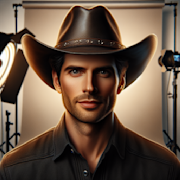The Art of Costume Design: Influential Styles in Classic Movies

Costume design is a crucial element in filmmaking that brings characters to life, enhances storytelling, and immerses viewers in the world of a movie. Throughout the history of cinema, several iconic costumes have left an indelible mark, shaping the industry’s sartorial standards and inspiring generations of designers. In this blog post, we will explore the influential styles in classic movies that continue to captivate audiences to this day.
1. The Golden Age of Hollywood Glamour
During the Golden Age of Hollywood in the 1930s and 1940s, costume design played an instrumental role in creating the image of glamorous movie stars. One of the most influential costume designers of this era was Edith Head, renowned for her elegant and sophisticated designs. Head worked closely with leading actresses like Audrey Hepburn and Grace Kelly, creating timeless classics such as the black Givenchy dress in “Breakfast At Tiffany’s” and the glamorous gowns in “To Catch a Thief.”
These costumes embodied the essence of Hollywood glamour, with their intricate detailing, luxurious fabrics, and impeccable tailoring. They continue to inspire fashion trends, red carpet looks, and costume designers to this day, reminding us of the magical allure of the silver screen.
2. Fantasy and Whimsy in Technicolor
The advent of Technicolor pushed the boundaries of cinematic costume design, allowing for vibrant and fantastical creations like never before. One of the most iconic examples is the ruby slippers worn by Dorothy in “The Wizard of Oz.” Designed by Gilbert Adrian, these sparkling sequined shoes became a symbol of magic and dreams, forever etched in the annals of movie history.
Alongside “The Wizard of Oz,” films like “Gone With The Wind” and “Singin’ in the Rain” showcased elaborate and colorful costumes that transported audiences to another world. These fantasy-driven designs continue to inspire costume designers today, reminding us of the powerful impact of imagination and creativity in film.
3. Breaking Boundaries with Modernism
In the 1960s and 1970s, costume design underwent a revolution as filmmakers embraced modernism and challenged traditional notions of style. In movies like “Bonnie and Clyde” and “A Clockwork Orange,” costume designers like Theadora Van Runkle and Milena Canonero introduced unconventional and provocative designs that reflected the rebellious spirit of the era.
These groundbreaking costumes incorporated elements of counterculture fashion, introducing leather jackets, mini-skirts, and bold patterns to the big screen. Their impact was not limited to the movies; they influenced fashion trends during the time and continue to inspire contemporary designers seeking to break free from convention.
4. Timeless Elegance and Period Dramas
Period dramas have always been a favorite canvas for costume designers to exhibit their skills and transport viewers to different eras. Films like “Gone With The Wind” and “Pride and Prejudice” showcased elaborate costumes that meticulously recreated historical fashion.
In recent years, films like “The Great Gatsby” and “Anna Karenina” have brought back the grandeur of bygone eras with their opulent costumes. These designs capture the essence of a specific time period, featuring sumptuous fabrics, intricate embroidery, and detailed accessories. They evoke a sense of nostalgia and provide valuable references for both fashion enthusiasts and those in the film industry.
5. Minimalism and Contemporary Realism
Contemporary movies often demand a more subtle approach to costume design, focusing on realism and character development. Costume designers like Jacqueline Durran, known for her work on “Atonement” and “Pride and Prejudice,” excel at creating costumes that effortlessly blend with the narrative and reveal subtle details about the characters.
These contemporary designs prioritize simplicity, functionality, and authenticity, allowing the audience to connect emotionally with the characters. By carefully selecting clothing that is relatable and reflects the character’s personality, designers shape the visual storytelling experience and ensure the costumes remain memorable.
The Enduring Influence of Costume Design
Costume design continues to be an essential component of filmmaking, influencing fashion trends, art, and cultural movements. From the glamour of the Golden Age of Hollywood to the realism of contemporary films, iconic costumes have left an indelible mark on popular culture. As cinema evolves, costume designers will continue to shape the visual language of film, leaving audiences captivated by the power of costume design.

Alberto Miller
Movie Fanatic
More From Classics Authority Movies

Movie
It Happened One Night (1934)

Movie
Beyond the Marquee: Classic Movie Theaters with Storied Histories

Movie
Classic Spy Movies: Intrigue, Espionage, and High-Stakes Action

Movie
A Night at the Opera (1935)

Movie
From Stage to Screen: Classic Films Adapted from Broadway Hits

Movie
Schindler's List (1993)





